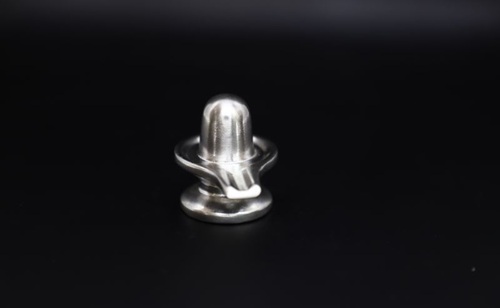In Hindu tradition, the Parad Shivling (also known as Mercury Shivling) holds immense spiritual significance. It is believed that worshipping an original Parad Shivling brings health, wealth, peace, and prosperity while removing negative energies from life. However, due to its high demand and sacred importance, the market is flooded with fake or adulterated Parad Shivlings made from alloys, chemicals, or even artificial metals instead of pure, solidified mercury.
To truly gain the divine benefits of worshipping a Parad Shivling, it is important to know how to identify an authentic and original piece. Let’s explore the key factors that help in identifying a genuine Parad Shivling.

Understand What Parad Shivling Is
Parad (mercury) is naturally a liquid metal. In spiritual and Ayurvedic texts, it is mentioned that mercury is solidified through a special process called “Samskar”, where mercury is purified and mixed with herbs and metals under strict Vedic procedures. This creates a solid Parad Shivling that is safe to keep and worship.
Original Parad Shivlings are therefore not just ordinary metallic idols but a result of traditional purification methods described in Rasashastra.
Weight and Density
An authentic Parad Shivling is heavier than it looks because mercury is a dense metal. If you compare it with brass or silver replicas of similar size, the Parad Shivling will always feel weightier in your hand. Fake ones, made with alloys or chemicals, often feel lighter or sometimes unusually hollow.
Smooth and Solid Surface
A real Parad Shivling has a smooth, shiny surface with a silvery-white finish. It is solid without cracks, bubbles, or hollow spaces. Many imitations are poorly finished, with rough patches, dull shine, or uneven shapes. This is a strong indication that the product is not made using traditional mercury purification methods.
Cold to Touch
Mercury retains a naturally cool property. Therefore, an original Parad Shivling will feel cold to touch even at room temperature, unlike brass, copper, or stone replicas that quickly adapt to surrounding temperatures. This cooling sensation is a natural sign of purity.
No Rusting or Corrosion
One of the best tests of authenticity is to observe the Shivling over time. A genuine Parad Shivling does not rust, tarnish, or corrode, whereas fake ones made with alloys may start showing discoloration, fading, or rust after a few months of use.
Price and Source
Authentic Parad Shivlings require complex Vedic procedures and high purification of mercury, which makes them relatively expensive. If you find a seller offering a Parad Shivling at a very low price, it’s likely a fake. Always purchase from trusted spiritual stores, temples, or certified sellers with a reputation for selling genuine Parad products.
Certification and Guarantee
Many reliable sellers provide authenticity certificates mentioning the composition and purity of the Parad Shivling. Before purchasing, ask for certification or written assurance of quality. Fake sellers rarely offer such proof.
Traditional Energy Test
Devotees often claim that original Parad Shivlings emit positive vibrations when kept in a temple or pooja room. Some even believe it creates a calming atmosphere and improves meditation. While this is subjective, many spiritual practitioners say that one can feel an unusual divine energy around authentic Parad Shivlings compared to ordinary metallic idols.
Conclusion
Identifying an original Parad Shivling requires attention to details such as weight, surface quality, coolness, durability, and certification. Since Parad Shivlings are deeply connected to spiritual beliefs and health benefits, buying a fake one defeats the entire purpose of worship.
To avoid being misled, always purchase from trusted and reputed sellers, preferably those who provide proof of authenticity. A genuine Parad Shivling not only enhances your spiritual practices but also symbolizes purity, prosperity, and divine blessings in your home.